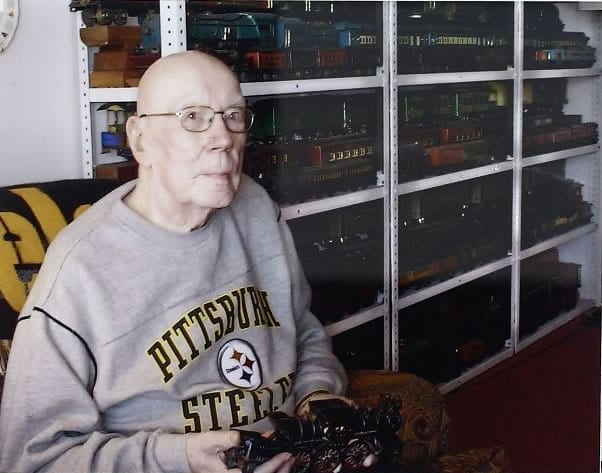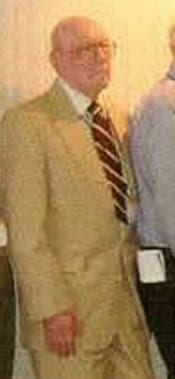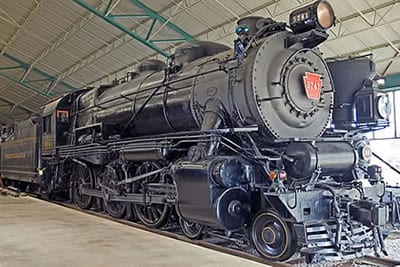A Meeting of the Jims – An Oral History

By Carol R. McGinnis, TCA 95-41066 Winter 2018
Editors Note: “Oral History” has been described as a maddeningly imprecise term. It is often used to refer to “formal, rehearsed accounts of the past presented by culturally sanctioned tradition-bearers.” It is also described as “printed compilations of stories told about past times and present experiences” and finally, “recorded interviews with individuals deemed to have an important story to tell.” historymatters.gmu.edu/mse/oral/what.html
Each of these uses of the term has certain validity. Unquestionably, most people throughout history have learned about the past through the spoken word. Moreover, for generations, history-conscious individuals have preserved others’ firsthand accounts of the past for the record, often precisely at the moment when the historical actors themselves, and with them their memories, were about to pass from the scene. historymatters.gmu.edu/mse/oral/what.html
What becomes important to the Train Collectors Association in this is that we have a wealth of information that, if not recorded in some manner, will be lost to those who cherish it most. That being said, the National Toy Train Library set forth several years ago to record Oral Histories of well-known members, businessmen, and toy train dignitaries. The compilations of this project reside at the NTTL in Strasburg.
It is now time to share them. e*Train is the venue that will be utilized. Enjoy!
Jim Fry, TCA #CM-HR-17 is remembered as one of the founding Charter Members of TCA. Both a Charter Member (CM) and an Honor Roll (HR) Member, he brought a lot to our organization. His knowledge of trains spanned the generations and he was a powerful speaker and discussed toy train information with many. He served TCA as its 9th President, from 1963 to 1964. Jim is seen at right with other Charter Members at the 50th Convention in Pittsburgh.
In this recounting, Jim Burke, TCA # 68-2321, a Past President himself, is the interviewer. Burke traveled to Euclid, Ohio to interview Fry on Sunday, October 29th, 2006. A meeting of the Jims, shall we say? (For the purposes of this article we will use Fry and Burke to designate the speakers) Their meeting comes as Fry is about to celebrate his 90th birthday.
Fry served as a Fireman on a steam locomotive. Fry and Burke first met at the Railroad Museum of Pennsylvania in Strasburg (just down the road from the National Toy Train building that houses our Museum, Library, and Business Office). As Burke was examining a part of the Pennsy G5, 4-6-0 locomotive, a voice said “What would you like to know?” It was Fry.
Fry went on to answer all Burke’s questions in very detailed fashion. When asked “How do you know so much about this engine?” the reply was “Well, I fired her!” Fry was retired back at that time and served as the fireman for one full summer, getting the job from an “extra list”. He fired that very engine, #5741, from Derry to Pittsburgh. He would put a “Wabash” (which was a pile of coal) into her at each station.
Fry worked on this locomotive just after WWII in 1943 or 44. He also talks about the freight haulers, the #11, which was a beast and was used to haul coal. Both of these engines would haul up and over Horseshoe Curve. Once they made it to Gallitzin it was all downhill.
As they talked, Fry began to comment on the J’s. These modern engines were state of the art. While he admits that the steam engine itself is primitive, the J was certainly top of the line. It was a fireman’s dream. Everything was merged so that the boiler size matched the cylinder size which matched the steam pressure which matched the wheel size. The fireman fired and the thing ran!
Moving from the Pennsy, Fry went on to Erie with them. Then he coaxed a road foreman with the New York Central and got a job there. He was able to run the J’s on the flatland and describes it as a real rush. Fry did not work with the Hudsons or the Mohawks as they were used for passenger trains, and he worked strictly on freights. An interesting note is that the railroad lines used only numbers for their designations, so it was the 3100, etc.
Once the NYC moved over to diesels, Fry stayed on as a fireman. Eventually Fry worked as an engineer. The work became easier– you sit there, move a little throttle, and the train goes! Sometimes the engineer would give him the train, and he would run it to Collinwood and then take it in to Westerville. Stopping a fully loaded 100 car train right beside where the next crew is waiting to get on became second nature. Fry was really that good!
Burke, knowing a bit about Fry, asked him about traveling to China and visiting the locomotive works. Fry went there with a group of rail fans to experience the Chinese railroads. He got a chance on one trip to run a locomotive and really impressed the interpreter and the others at the manufacturing plant with his skill and grace running the locomotive.
With his passion for the real thing, and his travels around the world to see the trains in other countries, Fry became interested in antique toy trains. His collection was of trains from 1905 until 1930. Ives litho, Overland Express, and the beautiful 400e’s. Fry didn’t know anyone else who collected toy trains. He spotted a Lionel catalog from the 1920’s while gathering some automobile sales literature from a friend and he began to collect trains. Subscribing to the old “Railroad Magazine” he would see ads run by Lou Redman. Fry lived in East Cleveland and would get into Pittsburgh on occasion and meet up with Lou. They were two peas in a pod!
These guys were young, and had no money, and there were unsold Blue Comets on the dealer’s shelves! But, Redman and Fry wanted the OLD stuff. “We would meet at Ed Alexander’s and it was so much fun. None of us had money, but we all had some trains. You could sell a train, make some money, and go buy a train!” Fry got his first Blue Comet (which cost $15 a car) by selling something for 15 bucks and then going to buy a car!
Burke talked about Fry’s year as President. It was one of the mysteries of life that Fry never figured out, why they picked him. But, it was a glorious year and there was only one dispute which was settled. “And that was it!”
Asked about a memorable moment with collecting, Fry shared that he and his son were out in the country and spotted an auction. They were just lounging beside a tree when a beautiful three-car American Flyer set was brought out of a shed. Two blue cars, one pink car, unpunched windows, a pink tender, all in close to mint condition, except for a little rust. Oh, the luck of being in the right place at the right time!
Another favorite of Fry is Dorfan. He likes the name, it’s rather magical. Fry describes them as works of art. Lionel cars are not too bad, but they cannot match Dorfan for color and eye appeal. And the Hafner Overland Express is such an imaginative toy for a little kid to play with.
Looking to inspire younger collectors who, when they see a beautiful collection and say “I will never be able to duplicate this,” Fry explains that “You do not walk in and find the old trains.” They are difficult to find, and most usually you have to go to another collector. Burke explains that young collectors need to have patience. Fry explained that he would buy trains from ads in the newspaper. They were what was available.
Walking into the other room, Fry shows Burke more of his wonderful collection. Walls of trains including Lionel, Dorfan, and Ives. Fry has a lot of lithography of which he is quite proud. He has all ten Ives nine inch boxcars. (Yes, there were only seven but he has three extras!) And he has red Ives passenger cars. Getting the third red car in a box of junk from an auction!
Fry has a very diverse collection. He has a Lionel pea green 418 with five cars. A Lionel 400E with four dark green cars. He also has a Marx Easter train wind-up with the chick cars and one with duck cars!
Fry’s interest in trains started with automobile memorabilia, moving into buses, trucks, tractors, and airplanes. That expanded into Lindbergh, zeppelins, steamships, and fireman buttons. All of these interests kept him busy, patient, and broadened his horizons. He recognized the value in advertising, and learned to appreciate their talent, skill, and sharpness. He describes them as artists and craftsmen. They knew what they were doing.
Burke wraps up the interview by reflecting on collecting. Look around at York, look under the table, look at yard sales, look at auctions, and look at flea markets. You never know where you will find what you’re looking for. He compliments Fry on his knowledge and wealth of experience.
“It’s rare when we get a chance to hear from someone who actually fired a locomotive, a steam locomotive.”







